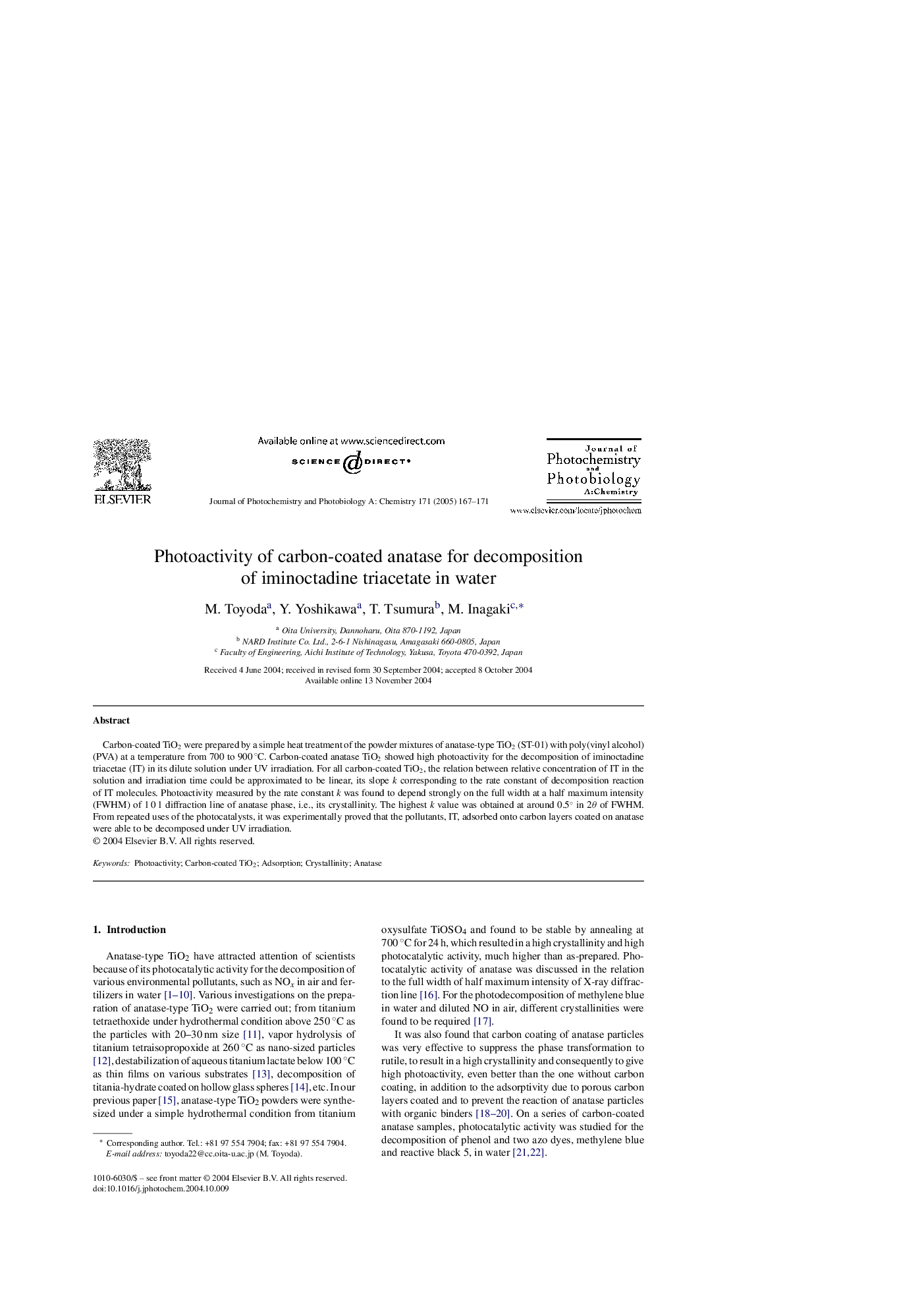| Article ID | Journal | Published Year | Pages | File Type |
|---|---|---|---|---|
| 9605678 | Journal of Photochemistry and Photobiology A: Chemistry | 2005 | 5 Pages |
Abstract
Carbon-coated TiO2 were prepared by a simple heat treatment of the powder mixtures of anatase-type TiO2 (ST-01) with poly(vinyl alcohol) (PVA) at a temperature from 700 to 900 °C. Carbon-coated anatase TiO2 showed high photoactivity for the decomposition of iminoctadine triacetae (IT) in its dilute solution under UV irradiation. For all carbon-coated TiO2, the relation between relative concentration of IT in the solution and irradiation time could be approximated to be linear, its slope k corresponding to the rate constant of decomposition reaction of IT molecules. Photoactivity measured by the rate constant k was found to depend strongly on the full width at a half maximum intensity (FWHM) of 1 0 1 diffraction line of anatase phase, i.e., its crystallinity. The highest k value was obtained at around 0.5° in 2θ of FWHM. From repeated uses of the photocatalysts, it was experimentally proved that the pollutants, IT, adsorbed onto carbon layers coated on anatase were able to be decomposed under UV irradiation.
Related Topics
Physical Sciences and Engineering
Chemical Engineering
Bioengineering
Authors
M. Toyoda, Y. Yoshikawa, T. Tsumura, M. Inagaki,
